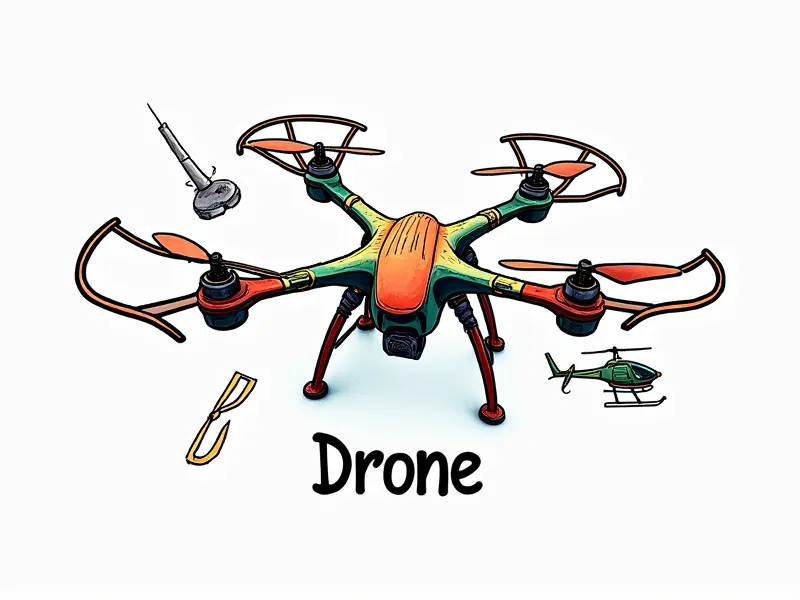RC receiver wiring basics

Welcome to our comprehensive guide on RC (Radio Control) receiver wiring basics. Whether you're a beginner or an experienced enthusiast looking to enhance your skills, this article will provide you with the knowledge and confidence needed to wire up your RC receiver like a pro.
How to Wire an RC Receiver Like a Pro
Wiring an RC receiver correctly is crucial for ensuring reliable control of your model aircraft or vehicle. Here’s how to do it:
- Identify the Power Source: Connect the battery pack or power module to the appropriate terminals on the receiver.
- Connect Servos and Motors: Use the correct signal wires from the receiver to each servo, motor, or ESC (Electronic Speed Controller).
- Ground Connections: Ensure all components are properly grounded for optimal performance and safety.
Beginner's Guide to RC Receiver Wiring
If you’re new to the world of radio control systems, understanding how to wire an RC receiver can seem daunting. This section will break it down into simple steps:
- Familiarize with Components: Learn about different types of receivers and their features.
- Understand Wiring Diagrams: Study the pinout diagrams provided by manufacturers to understand which wires connect where.
- Practice Makes Perfect: Start with a basic setup before moving on to more complex configurations.
Mastering RC Receiver Connections Quickly
Mastery comes from practice and understanding. Here are some tips for quick learning:
- Read Manuals Thoroughly: Every model has its own nuances, so reading the manual is essential.
- Ask Experienced Users: Join forums or clubs where you can learn from others' experiences.
- Experiment Safely: Try out different configurations in a controlled environment to understand their effects.
Easy Steps to RC Receiver Setup
Setting up your RC receiver is easier when you follow these steps:
- Install the battery pack securely.
- Connect servos and ESCs according to the pinout diagram.
- Test each component individually before connecting them all together.
Understanding RC Receiver Pinouts Easily
The pinout of an RC receiver is critical for proper wiring. Here’s how to interpret it:
- Identify Power and Ground Pins: These are typically marked with symbols or colors.
- Signal Lines: Each signal line corresponds to a specific function (e.g., throttle, steering).
- Battery Voltage Monitoring: Some receivers have dedicated pins for monitoring battery voltage.
Basic RC Receiver Wiring Tutorial
This tutorial will walk you through the basics of wiring an RC receiver:
- Gather Required Tools and Components: Ensure you have all necessary wires, connectors, and soldering equipment.
- Prepare the Receiver and Transmitter: Install batteries in both devices.
- Connect Power Supply: Attach the battery pack to the receiver's power terminals.
Quick Tips for RC Receiver Installation
Here are some quick tips to make your installation process smoother:
- Use Heat Shrink Tubing: Protect connections from moisture and mechanical stress.
- Label Wires: Clearly label each wire for easy troubleshooting later on.
- Check Connections Regularly: Ensure all wires are securely connected during flight or operation.
Simplified RC Receiver Wiring Explained
To simplify the process, follow these simplified steps:
- Start with Basic Configurations: Begin by connecting a single servo and gradually add more components.
- Leverage Online Resources: Utilize online forums, tutorials, and videos for additional guidance.
- Practice Regularly: The more you practice, the better you’ll understand the nuances of RC receiver wiring.
Essential Tips for RC Receiver Cabling
To ensure your cabling is done correctly and efficiently, consider these tips:
- Select High-Quality Components: Use reliable connectors and wires to prevent failures during operation.
- Plan Your Layout: Design a layout that minimizes cable clutter and allows for easy access when needed.
- Test Thoroughly: Before finalizing the setup, test each component thoroughly to ensure reliability.
Step-by-Step RC Receiver Connection Setup
Follow this step-by-step guide to set up your RC receiver:
- Identify Components: List all components you need for the setup.
- Read Manufacturer Documentation: Understand specific requirements and recommendations from the manufacturer.
- Connect Power Supply: Begin by connecting the power source to the receiver.
Quick Start Guide: RC Receiver Wires
This quick start guide will help you get your RC receiver up and running swiftly:
- Gather Necessary Tools: Have all required tools at hand before starting.
- Refer to Pinout Diagrams: Use the provided diagrams for accurate connections.
- Test Each Connection: Test each connection individually to ensure proper functionality.
Conclusion
Mastery of RC receiver wiring is essential for any hobbyist or professional working with radio-controlled models. By following the steps and tips outlined in this guide, you’ll be able to set up your RC receivers efficiently and reliably. Whether you’re a beginner looking to start out right or an experienced user seeking advanced techniques, these guidelines will help you achieve optimal performance from your RC systems.

